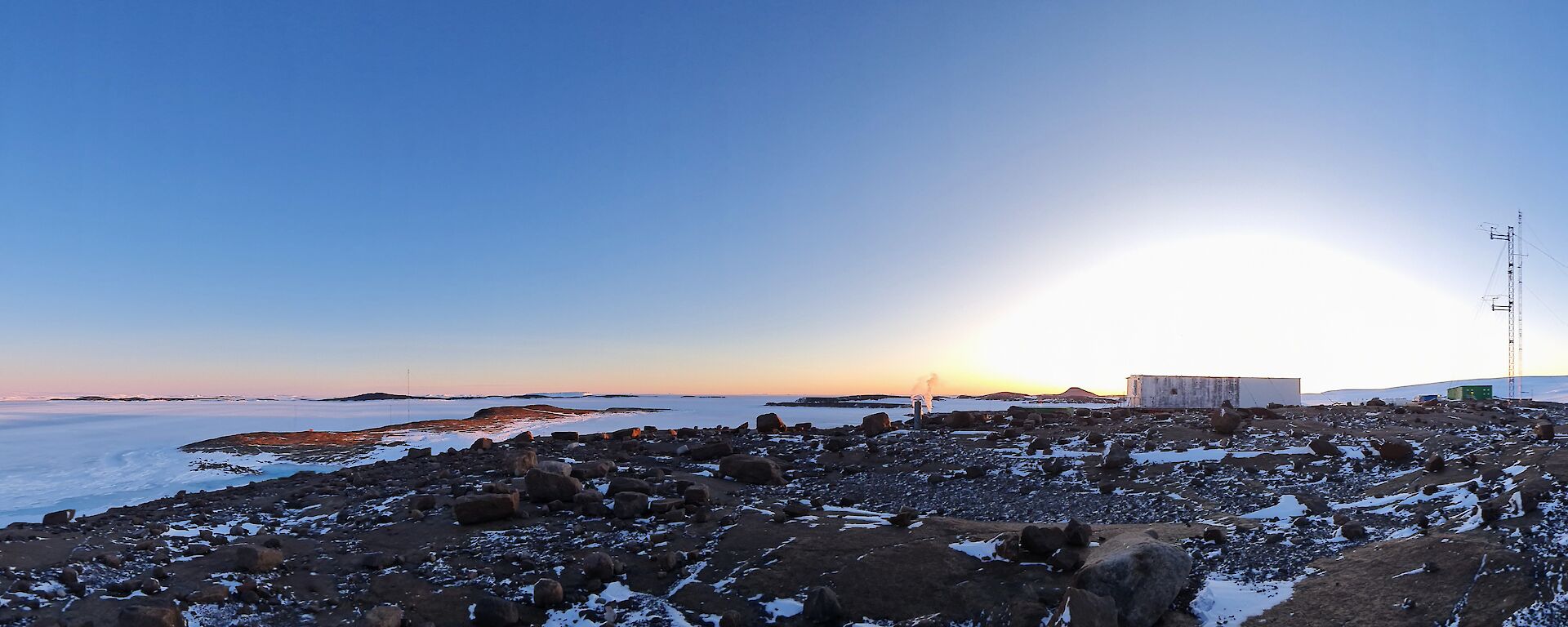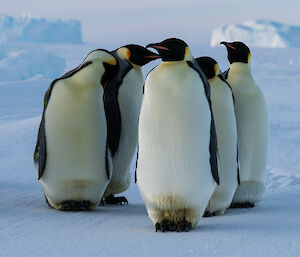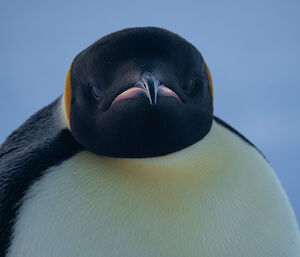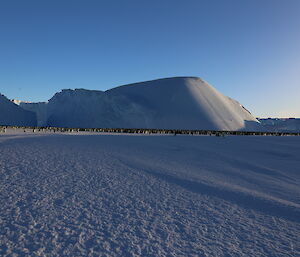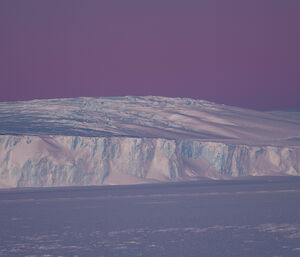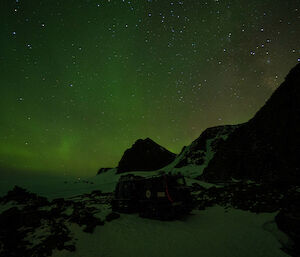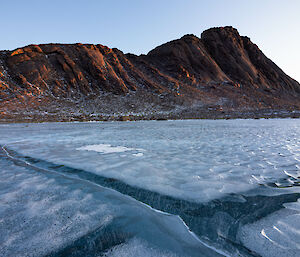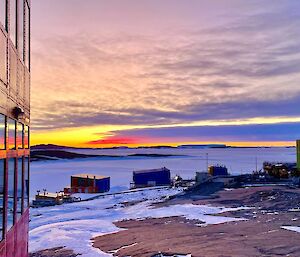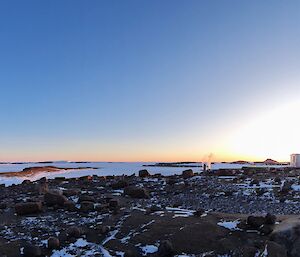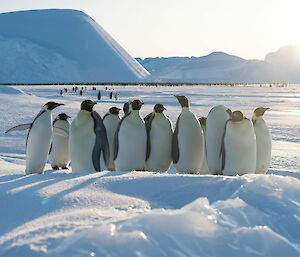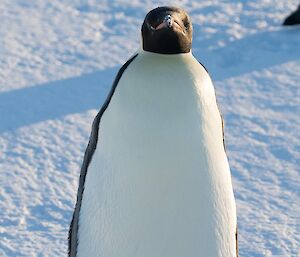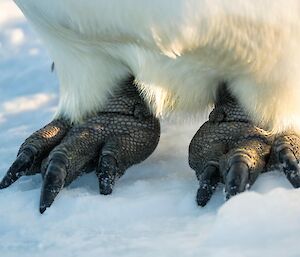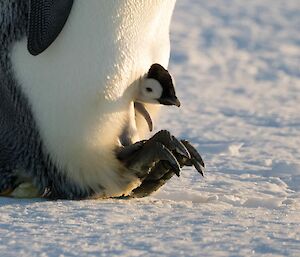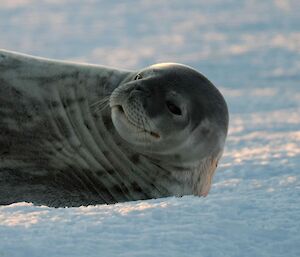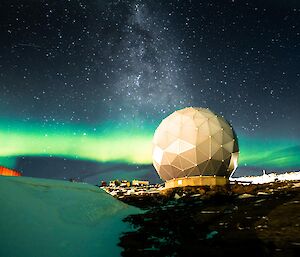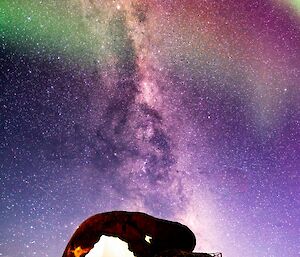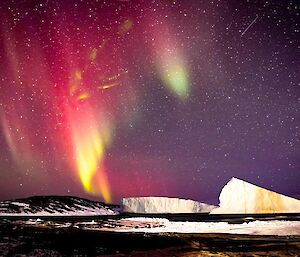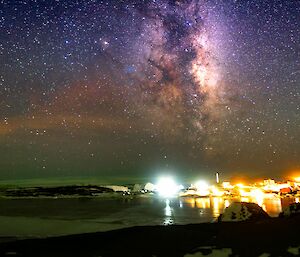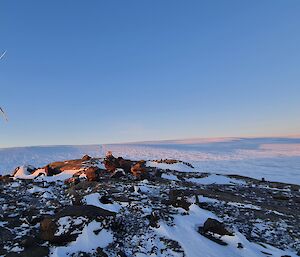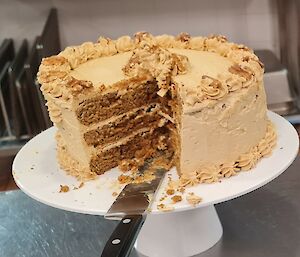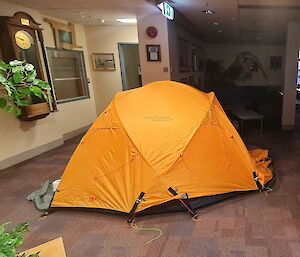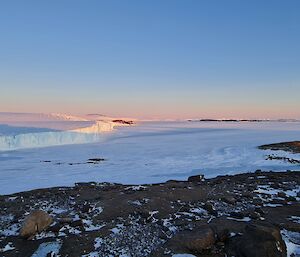This week has been relatively relaxed around station. Taking advantage of yet another week of mild winds, we braved the -30°C temperatures to get another team of expeditioners out to the emperor penguins at Auster, about 45 km to our east. This has allowed almost the entire station the chance to see and experience these amazing creatures in the early stage of their breeding cycle. With chicks just starting to hatch and be seen poking their little heads out from under the warm feathers of their parents, it will be all that more wondrous watching them grow over the coming few months. It is hard to imagine seeing them now, that in only four to five months, the chicks will be fully grown and ready to head out into the ocean to look after themselves.
The stretch of clear, cold, and, most importantly, mild winds, has also reassured us that the sea ice has strengthened, particularly in those areas previously affected by cracking and a large polynya that lay just off the coast. Although we do take our weather forecasts with a rather hefty dose of suspicion (they are pretty great for the day or two ahead...anything beyond that is more an educated guess), the coming week looks promising enough to re-attempt getting to the next closest emperor penguin colony at Taylor Glacier. Laying nearly 100 km to our west, the Taylor colony is a designated Antarctic Specially Protected Area (ASPA) and, since its discovery, has had stringent controls to prevent any human interference. It is also one of only a few colonies that undertake their breeding on land rather than sea ice. Since 1988 the colony has very carefully been photographed twice each year. Once in the middle of winter to determine how many breeding pairs have laid eggs, and once just before the sea ice breaks out to see how successful the chicks have been during their growth.
In preparation, we have gone through all of our deep field equipment, and our mechanics have ensured the two Hägglunds vehicles we will be taking are fully serviced. Over such a distance, which will take us away from station for four days, it is also essential to take enough spare parts and tools to deal with any issues that might arise with the vehicles. On all such deep field activities, one of the mechanics will also come on the trip to lend their expertise to any repairs that may be required. Our chef, Nick, has also done his part preparing the party for the days away from station. From preparing vacuum-packed meals to ensuring plenty of dessert over the last week, we can be sure we have enough calories to take on the cold weather ahead!
Cat (Mawson Station Leader)

